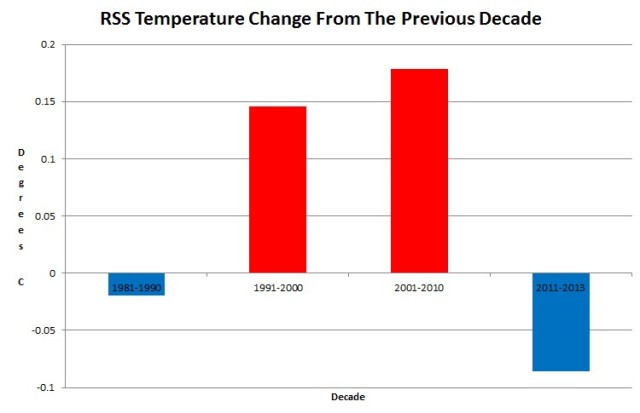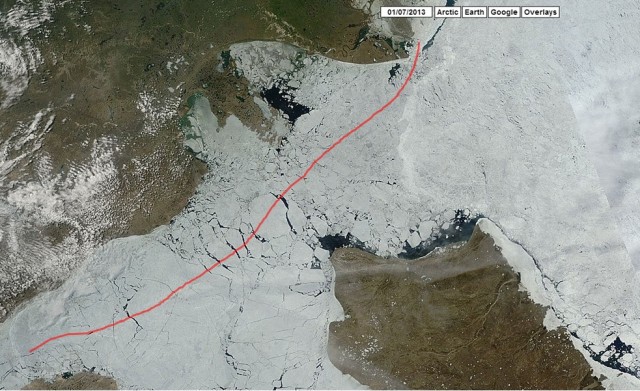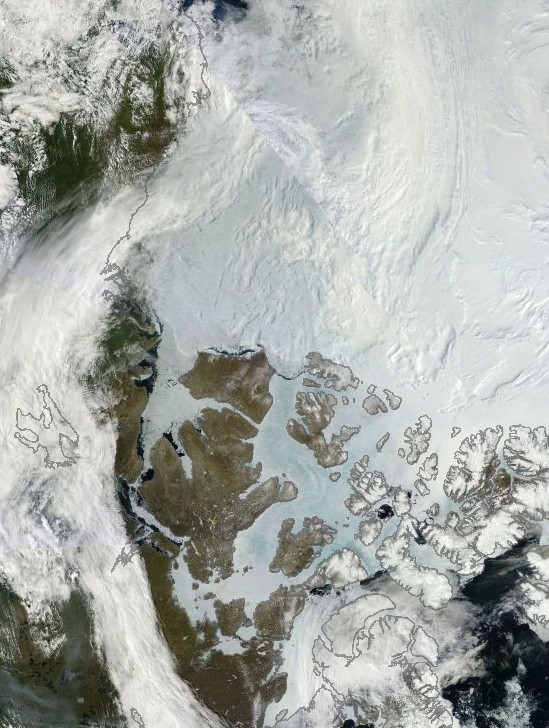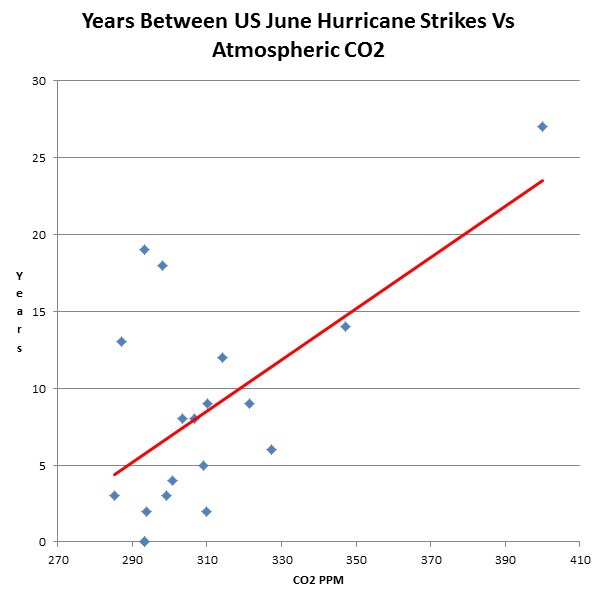If MAN cause CO2 was to blame then how did overall ice retreat SLOW this year compared to last year? Surely NOT because MAN generated less CO2? The cause-effects spoken by the Media using buzz words of Global Warming and Climate Change could not be further from the truth nor from the real science.
- - - snip - - -
http://nsidc.org/arcticseaicenews/2013/07/a-new-average-for-arctic-sea-ice/

Arctic sea ice continues to track below average but remains well above the levels seen last year. The relatively slow ice loss is a reflection of the prevailing temperature and wind patterns. As of July 1, NSIDC Arctic Sea Ice News and Analysis and the Sea Ice Index have transitioned to a new 30-year baseline period, 1981 to 2010.
June is a transition period for Arctic sea ice as 24-hour daylight reigns, and melt reaches towards the North Pole. Thus it is an appropriate time for NSIDC to transition to a new 30-year baseline period, also called a “climate normal.” The satellite record is now long enough to allow NSIDC to match current National Ocean and Atmospheric Administration (NOAA) and World Meteorological Organization (WMO) standard baselines of 1981 to 2010 for weather and climate data. Full details of the changes and the implications for NSIDC sea ice statistics are described in the NSIDC Sea Ice Index.
Average sea ice extent for June 2013 was 11.58 million square kilometers (4.47 million square miles). This was 310,000 square kilometers (120,000 square miles) below the 1981 to 2010 average (the new baseline period) of 11.89 million square kilometers (4.59 million square miles). In comparison, the 1979 to 2000 period that we previously used averaged 12.16 million square kilometers (4.70 million square miles). June 2013 was 760,000 square kilometers (293,000 square miles) above the record low June extent in 2010.
Although the rate of ice loss increased toward the end of June, overall ice has retreated more slowly this summer compared to last summer, reflecting patterns of atmospheric circulation and air temperature. Average June temperatures at the 925 mb level were average to slightly below average over most of the Arctic Ocean, contrasting with above average temperatures over most of the surrounding land. This temperature pattern is associated with unusually low sea level pressure centered near the North Pole. This type of circulation pattern is known to slow the summer retreat of ice, not just because it fosters cool conditions, but also because the pattern of cyclonic (counterclockwise) winds tends to spread the ice out. An interesting regional aspect of this pattern is that on the heels of unusually cold spring conditions, the Alaska interior experienced some days of record high temperatures during June.
Sea ice extent declined steadily through most of the month, in sharp contrast to last year when June experienced a record fast pace of sea ice retreat. There was a speed-up in ice loss toward the end of the month. Overall, extent dropped an average of 70,300 square kilometers (27,000 square miles) per day through the month, slightly higher than the 1981 to 2010 average.
June 2013 was the 11th lowest June in the 1979 to 2013 satellite record, 760,000 square kilometers (293,000 square miles) above the record low in 2010. The monthly trend is -3.6% percent per decade relative to the 1981 to 2010 average (also -3.6% per decade relative to the old 1979 to 2000 baseline).
Comments are closed.
(I THINK THE "COMMENTS ARE CLOSED" SPEAKS LOUDEST TO THE REAL ISSUE CALLED G-O-V-E-R-N-M-E-N-T?)
FYI -
:-) Humor....
Canadian Government Must Be Lying
Environment Canada shows the Arctic full of ice, yet Barack Obama says that evil Americans have melted it.
Rowing Through Ice-Free Waters To Draw Attention To Climate Change
A four-man crew is embarking today to row through the Northwest Passage in about 80 days. The feat has been made possible by global warming, which has freed Arctic waterways of more ice than ever.The rowers hope to draw attention to the effects of climate change, the Ottawa Citizen reported.In 2007, however, U.S. scientists reported that the Northwest Passage was completely free of ice for the first time since satellite tracking began in 1978.
This is what their ice-free route looked like yesterday.
and the last laugh...
Not A Single Honest Word From Or About The Rowing Team
The Northwest Passage shipping route from the North Atlantic to the North Pacific has a huge amount of ice in it, and almost no open water.
Yet all we hear about the rowing team, is that global warming has melted the ice and made their trip possible. Another 100% pure global warming fraud.
EOSDIS Worldview (Alpha)
AND OF COURSE YOU COULD ARGUE THAT THERE IS A BIG BENEFIT TO HIGHER CO2 WHICH THE DATA SHOWS MITIGATES SEVERE STORMS SUCH AS HURRICANES:,,,, HUMMM????
As CO2 has risen, the frequency of June hurricane strikes has dropped dramatically. The feds should give carbon polluters a huge rebate for protecting the US from countless numbers of missing June hurricanes, which didn’t happen thanks to CO2.
AND OF COURSE YOU COULD ARGUE THAT THERE IS A BIG BENEFIT TO HIGHER CO2 WHICH THE DATA SHOWS MITIGATES SEVERE STORMS SUCH AS HURRICANES:,,,, HUMMM????
Longest Period On Record Without A June Hurricane In The US
In 1886 the US had three June hurricane strikes, but it has now been more than 27 years since the US was hit by a hurricane in June.
AND LETS NOT FORGET THAT THE FOUR ROWERS ARE GOING TO RECEIVE NEW ELECTRIC AUTOMOBILES FROM MAINSTREAM FOR ATTEMPTING TO ROW IN THE ICED CHOKED NW PASSAGE... BUT WILL 40 MILES BE OF REAL BENEFIT?
Refueling Your Electric Car
The great thing about electric cars is that they only require eight hours to recharge, and you can recharge them overnight using your solar photo-voltaic panels.
Depending on how much sunshine you receive at night, you could potentially drive as far as 40 miles the next day before having to recharge again.
$$$$$ JUST FOLLOW THE M-O-N-E-Y..... INTO MAINSTREAM RENEWABLE POWER'S CORPORATE POCKETS.....







No comments:
Post a Comment
Enter your comment(s) here...